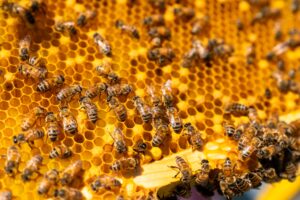If you look closely at your surroundings, you will see them – scaly, fuzzy, asymmetrical shapes adding colour and texture to the trunk of a tree or a rock.
At a glance, they can be hard to identify. Are they plant or animal? Fungus or beard?
The answer is none (and a little bit) of the above.
WHAT’S IN A LICHEN?
These organisms are called lichens. They are a symbiotic association between at least one fungus and either a green algae or a blue-green algae known as cyanobacteria.
On their own, fungus and algae are two distinct organisms. The former belong to the kingdom Fungi, the latter to the kingdom Monera (single-celled cyanobacteria) or Plantae (multicellular green algae).
So where does that leave lichens?
Despite not being entirely fungus or algae, lichen taxonomy has been mainly determined by the fungus. Therefore, lichens belong to the kingdom Fungi.
But this does not mean that algae are not equally important in this relationship.
TEAMWORK MAKES THE SYMBIOSIS WORK
Lichens are found in almost every ecosystem on Earth from the poles to the tropics.
They can also survive in extreme environments, even with low water availability (a condition known as anhydrobiosis). And they can colonise diverse substrates like wood, rock, soil and concrete.
The fungus usually provides the outer structure (or thallus), while the algae performs photosynthesis and provides the thallus the carbohydrates and oxygen it needs to grow.
These adaptations have given lichens an important evolutionary advantage, making them one of the most successful symbioses in nature.
And it’s only possible thanks to the contributions from both fungal and algal partners.
THE SHAPES OF LICHENS
While lichen adaptations are remarkable, the same can be said about the diversity of their forms.
For instance, filamentous lichens, which often grow on the trunks of trees, have the appearance of small branches.
The fungus is usually responsible for the thallus, but not in filamentous lichens – the algae provides the main structure and the fungus wraps around it.
Crustose lichens are flat and grow radially on substrates like bark and rocks. They are tightly attached to their substrate and cannot be removed without destroying the thallus – so please don’t try to remove them!
Adding to the diversity of lichen growth forms, leprose lichens tend to have bright colours and a powdery look while gelatinous lichens have the appearance and texture of blue-green jelly.
Foliose lichens have a flat thallus and lobes, which gives them a leaf-like look. And fruticose lichens have a shrubby appearance with hair-like thalli that can be cylindrical or flat.
MIND THE LICHENS
WA is home to 800 lichen species, including the Australian endemic Xanthoparmelia. And all its growth forms can be found in the Avon Wheatbelt area.
Lichens are very sensitive to changes in climate and air quality. They can also absorb and store contaminants, which are measured by scientists to study environmental changes and pollution levels.
Lichen growth forms can also provide information on the health of a place – the greater the lichen diversity, the healthier the environment.
For these reasons, lichens are important bioindicators, and they greatly contribute to the health of our ecosystems.
So think of this when you’re visiting your favourite places and spot these organisms.
And please – don’t touch or remove them from their substrates!















